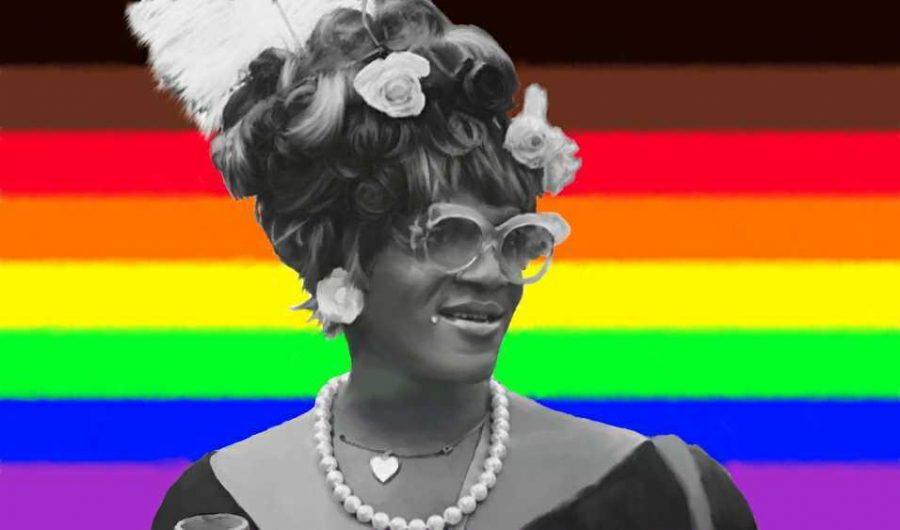Opinion | Don’t leave the riots out of the Stonewall narrative
June 23, 2020
I attended my first Pride last year. It commemorated the 50th anniversary of the Stonewall Riots — arguably the most important galvanizing event in the fight for LGBTQ+ rights — with rainbow flags, dance parties, parades and all kinds of performances, from stand-up to drag.
The Stonewall Inn has become widely celebrated as the site of the critical event in the Queer Liberation Movement, even being designated as a national monument in 2016 by the Obama Administration. What people often forget — or more accurately, choose to overlook — is that the Stonewall Riots were, in fact, riots.
The often whitewashed account of this monumental event — where tales of thrown bricks are replaced with peaceful marches or celebrations — undermines the legitimacy of the Queer Liberation Movement and Pride as we know it. In order to appreciate the privileges many queer folk currently hold and more truthfully contextualize the protests and social movements gaining momentum today, it is imperative to honor the history of the Stonewall Riots in its entirety.
When same-sex relations were illegal in New York City in the 1960s, gay bars became safe havens for LGBTQ+ individuals seeking to express themselves without fear of judgment or violence. Until 1966, these spaces were targeted by the New York State Liquor Authority as “disorderly.” While such regulations were rolled back in 1966, gay bars continued to be raided by police, specifically a division known as the public morals squad.
David Carter, one of the most prominent and impactful historians on the Stonewall Riots, said the raids were a deliberate and methodical attempt by the NYPD to keep LGBTQ+ citizens in the shadows.
“By 1966, over 100 men were arrested each week for ‘homosexual solicitation’ as a result of police entrapment,” Carter wrote in his 2004 book, “Stonewall: The Riots That Sparked the Gay Revolution.” “In the mid-1960s — the very time when a wave of freedom, openness and demand for change was cresting — New York City increased its enforcement of anti-homosexual laws to such an extent that it amounted to an attempt to impose police-state conditions onto a homosexual ghetto.”
One such raid took place on June 28, 1969, at the Stonewall Inn in lower Manhattan. Without warning, the officers entered the bar, aggressively arrested employees and invasively checked the sex of any patrons who seemed to be violating the state’s “gender appropriate clothing” statute.
Mark Segal, one of the original protestors, recounted the violence inflicted by the police on patrons to The New York Times.
“They came in the bar. They slammed people against the wall,” Segal said. “They shoved people, and they hurled insults that you can probably imagine.”
After a lesbian woman — believed to be activist Storme DeLarverie — was hit in the head while being forced into a police van, the fed-up patrons began throwing small objects such as pennies, cobble stones and bottles at the officers, eventually evolving into a riot of hundreds of people. During the riot, protesters tried to set the bar — where police officers and a few others had barricaded themselves — on fire.
While this riot itself lasted only an hour, the following days were filled with street protests. Led primarily by Black transgender women, such as Marsha P. Johnson, Stonewall lit the fire of a decades-long fight for equality and a rebellion against the social norms that forced the queer community into the same shady bars and back alleys that were consistently, deliberately and violently raided. Carter said the impact of such an event cannot be understated.
“It is to the gay movement what the fall of the Bastille is to the unleashing of the French Revolution,” he wrote.
At a time when the parallels between the past and present cannot be missed — Black-led movements against police aggression and systemic oppression — it is as irresponsible as it is inaccurate to honor Stonewall solely through rainbow flags and dancing. The real way to honor the legacy of Stonewall is to recognize its history in its entirety and work to support movements today that use similar tactics.
As violence at the hands of the police has become increasingly apparent in the cases of George Floyd, Breonna Taylor and many others who have yet to gain such recognition, we cannot forget the same police divisions who have marched in Pride since 1996 were the antagonists in the systemic oppression of LGBTQ+ individuals.
Violence against Black transgender women continues to rise — Riah Milton and Dominique “Rem’Mie” Fells, two Black trans women, were killed within a span of just a few days earlier this month. It’s time the LGBTQ+ community — especially those whose race contributes to the privileges they have earned as a result of the Queer Liberation Movement — stand up for those who fought for our rights. NonBlack members of the LGBTQ+ community cannot forget that, for many, queer liberation translated to white queer liberation.
In fact, these connections exist even among organizers themselves. Kei Williams, a Black transmasculine designer, writer and organizer with the Marsha P. Johnson Institute, said the LGBTQ+ community needs to go further to support the rights of Black, Idigneous, People of Color queer individuals.
“It’s great we have marriage. I can marry my partner, but what does that matter if I’m not alive to get married?” Williams said in 2016.
If you’ve ever gone to Pride or a gay bar, worn a “Born This Way” T-shirt, openly expressed your queerness or simply existed as a nonstraight or noncis individual, you have riots to thank. If you are indebted to a riot, now is the time to support the movements behind them. Black trans women stood up for all of the queer community — now it’s time we stand for them.
Julia is a rising junior studying English writing, political science and theatre arts. Write to Julia at [email protected].








